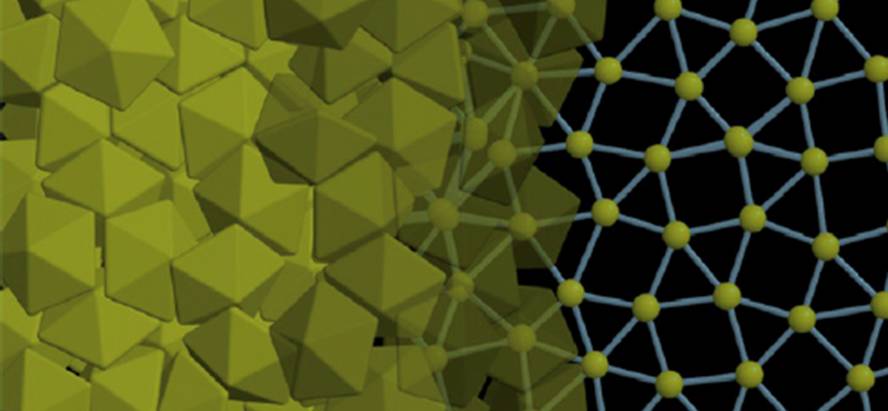Create an innovative method of quasi-crystals formation

A team of biomaGUNE researchers, the Northwestern University International Institute of Nanotechnology and the University of Michigan have presented a novel methodology for the design of colloidal quasicrystals using DNA. It's a model of controlled synthesis of complex nanostructures so far unattainable. The work has been published in the journal Nature Materials.
Quasicrystals are ordered but not repetitive crystalline structures, very rare and very difficult to perform. Some examples are known, those found in nature or those obtained by serendipity. Now, this study has shown how you can harness the programmability of DNA to design and build quasicrystals.
This research was based on a proposal from the CIC bionanoplasmic team biomaGUNE. The group is led by Luis Liz Marzán, a pioneer in the development of surface change methods to improve the possibilities of manufacturing and application of nanoparticles. “In fact, we found a way to synthesize decahedral geometry nanoparticles, ten-sided particles, with enough quality to address this study. Decahedral geometry is fundamental in this case due to its pentagonal symmetry. Pentagons are fundamental geometric elements in quasicrystals, which has allowed these special materials to reach,” explains Liz Marzán.
The group, led by Professor Sharon Glotzer of the University of Michigan, had in 2009 the first quasicrystal nanoparticles per layer: “In the original quasicrystal simulation, the arrangement between decahedrons left very small spaces between them. These gaps would be covered by DNA,” explains Glotzer.
The study has focused on the formation of decahedral nanoparticles with DNA as a guiding structure in a colloidal medium, that is, in a non-homogeneous medium in which the particles are suspended in a fluid. Combining computer simulations and rigorous experiments, the team has made a surprising discovery: these decahedral nanoparticles can be organized to form quasi-crystalline structures with pentagonal and hexagonal motifs, and eventually a dodecagonal quasicrystal is created.
“We have linked DNA chains to nanoparticles to guide the organization of nanoparticles and in a reversible, temperature-sensitive way,” explains Liz Marzán. “The engineering of colloidal quasicrystals has been an important milestone in the field of nanoscience. Our work has opened up countless possibilities for advanced materials and innovative nanotechnology applications.”





